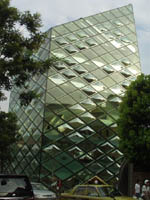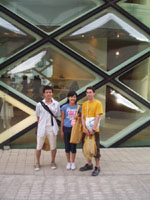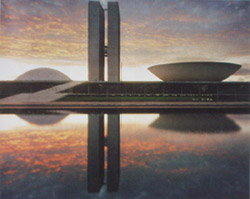Topic: Architecture / Chicago
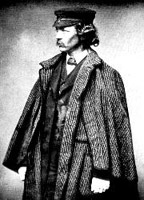 TAKOTRONsemester001 officially ended yesterday as I handed in my paper, "Frederick Law Olmsted and the Democratization of Landscape Theory," at 12:06PM. For the topic I researched the famous American landscape architect in relation to 2 major theoretical movements that directly influenced him, the English Picturesque of the mid to late 18th century, and American transcendentalism of the mid 19th. Both movements were rooted in our experience of rural landscapes, but had elements somewhat contrary to democracy. The Picturesque was put forth by wealthy British gentlemen who created contrived "natural" landscapes for their enormous country estates. Transcendentalism had a strong moral, even theological undertone that enveloped its aesthetic ideas, but it was too introverted and rural to be directly applicable to the urban industrial life that would grow to dominate American society.
TAKOTRONsemester001 officially ended yesterday as I handed in my paper, "Frederick Law Olmsted and the Democratization of Landscape Theory," at 12:06PM. For the topic I researched the famous American landscape architect in relation to 2 major theoretical movements that directly influenced him, the English Picturesque of the mid to late 18th century, and American transcendentalism of the mid 19th. Both movements were rooted in our experience of rural landscapes, but had elements somewhat contrary to democracy. The Picturesque was put forth by wealthy British gentlemen who created contrived "natural" landscapes for their enormous country estates. Transcendentalism had a strong moral, even theological undertone that enveloped its aesthetic ideas, but it was too introverted and rural to be directly applicable to the urban industrial life that would grow to dominate American society.
Frederick Law Olmsted (right), who was an established social activist before he began designing landscapes, was able to adapt his influences to create a plethora of urban park systems that would serve the surrounding communities democratically. He made it a point to avoid loud details like flower beds, fountains, and symmetrical open squares, instead developing experiential, all-encompassing scenes that would have an "unconscious influence" on visitors. His hope was, and he succeeded, to introduce into our cities "scenery offering the most agreeable contrasts to that of the rest of town; an opportunity for the people to come together for the single purpose of enjoyment, unembarrassed by the limitations with which they are surrounded at home or in the pursuit of their daily avocations."
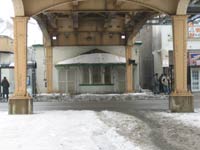 Olmsted's first design was New York's Central Park, planned with architect Calvert Vaux beginning in 1858, and he would go on to design many of the nation's campuses and most treasured parks, among them Brooklyn's Prospect Park, Boston's Jamaica, Fenway, and Franklin Parks, Niagara and Yosemite national parks, and Chicago's southern park system. The last was planned in the 1870s, and would be modified as the site of 1893's World's Columbian Exhibition. The fairgrounds comprised Jackson Park and the Midway Plaisance (where the first Ferris Wheel was featured), which extended West to Washington Park.
Olmsted's first design was New York's Central Park, planned with architect Calvert Vaux beginning in 1858, and he would go on to design many of the nation's campuses and most treasured parks, among them Brooklyn's Prospect Park, Boston's Jamaica, Fenway, and Franklin Parks, Niagara and Yosemite national parks, and Chicago's southern park system. The last was planned in the 1870s, and would be modified as the site of 1893's World's Columbian Exhibition. The fairgrounds comprised Jackson Park and the Midway Plaisance (where the first Ferris Wheel was featured), which extended West to Washington Park.
 So I had turned in this paper and was on my way home when i decided to take the long route and walk through Washington Park. The Green Line drops you off on Garfield Boulevard across the street from the oldest existing original "L" station, from 1892 (left). The area has changed completely since the late 19th century, and the idealistic hope that went into it is difficult to discern. In the 19teens and 20s the neighborhood bordering Washington Park to the west rapidly shifted to African-American and, unfortunately, many of the previous settlers dispersed. Today it remains almost completely African-American (>98%) and is one of Chicago's more impoverished regions, with a median income barely over $15,000 with almost half of its buildings vacant. The area east of Washington Park, called Hyde Park, is a diverse and well-reputed neighborhood, partly because it is home to the University of Chicago.
So I had turned in this paper and was on my way home when i decided to take the long route and walk through Washington Park. The Green Line drops you off on Garfield Boulevard across the street from the oldest existing original "L" station, from 1892 (left). The area has changed completely since the late 19th century, and the idealistic hope that went into it is difficult to discern. In the 19teens and 20s the neighborhood bordering Washington Park to the west rapidly shifted to African-American and, unfortunately, many of the previous settlers dispersed. Today it remains almost completely African-American (>98%) and is one of Chicago's more impoverished regions, with a median income barely over $15,000 with almost half of its buildings vacant. The area east of Washington Park, called Hyde Park, is a diverse and well-reputed neighborhood, partly because it is home to the University of Chicago.  During the surrounding area's demographic changeover, the University made active moves to prevent blacks from settling near Washington Park, and may today be somewhat responsible for the park's function as a sort of buffer zone separating the haves from the have-nots. It is still a beautiful escape from city life, featuring a (frozen) lagoon, a variety of trees, wildlife, bridges, and paths, and is treasured by many different people, including students, locals, school groups, nature-watchers, and even cricket players.
During the surrounding area's demographic changeover, the University made active moves to prevent blacks from settling near Washington Park, and may today be somewhat responsible for the park's function as a sort of buffer zone separating the haves from the have-nots. It is still a beautiful escape from city life, featuring a (frozen) lagoon, a variety of trees, wildlife, bridges, and paths, and is treasured by many different people, including students, locals, school groups, nature-watchers, and even cricket players.
Posted by thenovakids
at 4:25 PM CST
Updated: Tuesday, 30 May 2006 12:10 AM CDT
Post Comment | View Comments (1) | Permalink | Share This Post
Updated: Tuesday, 30 May 2006 12:10 AM CDT
Post Comment | View Comments (1) | Permalink | Share This Post
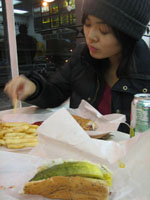
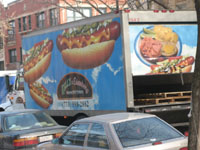


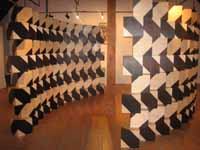
 Then I ended up going out with miss Kei and her friends Joe and Nar, and drinking quite a bit. At 3:15, in the AM, we were on our way to Golden Nugget or IHOP or something, but noticed that the Wiener's Circle was still open, so we went in, because as any local will tell you, they have about the best hot dog in Chicago. Also, their employees verbally abuse the customers in a sort of calculated entertaining way that's also heartfelt. Last night they were saying they were closing, so we better tip good. I got a hot dog with everything, and then tipped good, and they threw in cheese fries. Amazing.
Then I ended up going out with miss Kei and her friends Joe and Nar, and drinking quite a bit. At 3:15, in the AM, we were on our way to Golden Nugget or IHOP or something, but noticed that the Wiener's Circle was still open, so we went in, because as any local will tell you, they have about the best hot dog in Chicago. Also, their employees verbally abuse the customers in a sort of calculated entertaining way that's also heartfelt. Last night they were saying they were closing, so we better tip good. I got a hot dog with everything, and then tipped good, and they threw in cheese fries. Amazing.  Since thenovakids are all working hard fulltime learning how to build future cities, we've neglected our TAKOTRON NEWS page among many other of the often-overlooked pleasantries of our everyday lives, including decent meals.
Since thenovakids are all working hard fulltime learning how to build future cities, we've neglected our TAKOTRON NEWS page among many other of the often-overlooked pleasantries of our everyday lives, including decent meals. 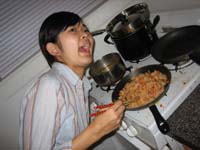
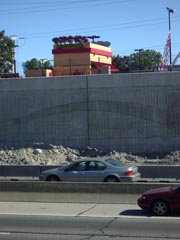

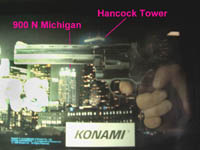


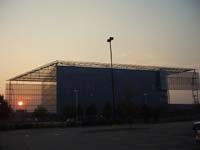
 A couple weeks ago Takotron made the long return to Long Island to visit family and friends. One positive feature of HQ LI, only applicable in the summertime, is it's proximity to the beaches. To the North is the Long Island Sound and Sunken Meadow State Park, and to the South the equally poetically- named Fire Island.
A couple weeks ago Takotron made the long return to Long Island to visit family and friends. One positive feature of HQ LI, only applicable in the summertime, is it's proximity to the beaches. To the North is the Long Island Sound and Sunken Meadow State Park, and to the South the equally poetically- named Fire Island.  The creation of the south shore beaches is undeniably successful--he built coastal highways and bridges to make Fire Island and, to the West, Jones beach, accessible to the public. But before reporting on our Robert Moses State Park beach paradisiacal romp, let us say a few things about the controversial mastermind.
The creation of the south shore beaches is undeniably successful--he built coastal highways and bridges to make Fire Island and, to the West, Jones beach, accessible to the public. But before reporting on our Robert Moses State Park beach paradisiacal romp, let us say a few things about the controversial mastermind. The LIE's overpasses were consciously built at a height that prohibited public buses; The Northern State was zoned to cut through middle class property while winding around that of the rich (from whom he received questionable funds); The Cross-Bronx tore through poor neighborhoods, displacing 1530 families and isolating the South Bronx.
The LIE's overpasses were consciously built at a height that prohibited public buses; The Northern State was zoned to cut through middle class property while winding around that of the rich (from whom he received questionable funds); The Cross-Bronx tore through poor neighborhoods, displacing 1530 families and isolating the South Bronx. 


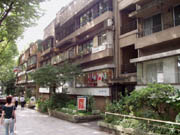
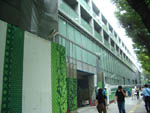

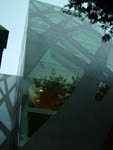
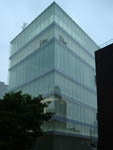
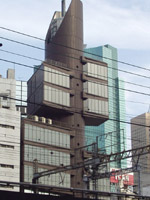 When thenovakids first began to emerge in 2002 during a semester abroad at Jouchi Daigaku, we went building-seeking on many occasions. At the top of our list was Kisho Kurokawa's Capsule Tower in Ginza, Tokyo, but we lacked the background information, navigation skills, and discipline to find it. For just a second I thought Tange's ugly brown Shizuoka Broadcasting Headquarters might be it--it's modular I guess (right). But this time, EPISODE III, we were prepared, with
When thenovakids first began to emerge in 2002 during a semester abroad at Jouchi Daigaku, we went building-seeking on many occasions. At the top of our list was Kisho Kurokawa's Capsule Tower in Ginza, Tokyo, but we lacked the background information, navigation skills, and discipline to find it. For just a second I thought Tange's ugly brown Shizuoka Broadcasting Headquarters might be it--it's modular I guess (right). But this time, EPISODE III, we were prepared, with 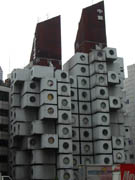
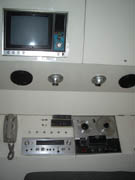
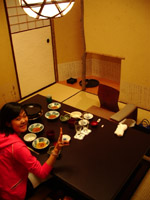 We wanted to try Sukiyaki, which is supposed to be pretty fine and very expensive. Kei's uncle recommended a place, IMAHAN. We had a private Cha-shitsu style room, into which a young woman came and cooked for us. There's a boiling broth in which she cooks various vegetables and then the thinly sliced, perfectly tender beef. You dip it all in raw beaten egg. The environment and the quality of the ingredients were incredible, and the service is traditional (and slavish). But Kei got our server to lighten up by exhibiting her purikura collection, and ultimately donating a picture to her.
We wanted to try Sukiyaki, which is supposed to be pretty fine and very expensive. Kei's uncle recommended a place, IMAHAN. We had a private Cha-shitsu style room, into which a young woman came and cooked for us. There's a boiling broth in which she cooks various vegetables and then the thinly sliced, perfectly tender beef. You dip it all in raw beaten egg. The environment and the quality of the ingredients were incredible, and the service is traditional (and slavish). But Kei got our server to lighten up by exhibiting her purikura collection, and ultimately donating a picture to her.
 Antonin Raymond was a Czech-born American architect who brought the International Style to Japan first with his own reinforced concrete house in Tokyo, completed in 1923. He arrived there in 1919, when he oversaw the construction of his mentor Frank Lloyd Wright's Imperial Hotel. Wright's hotel remarkably withstood the Great Kanto earthquake of 1923, which helped fuel the growing interest in Modern design.
Antonin Raymond was a Czech-born American architect who brought the International Style to Japan first with his own reinforced concrete house in Tokyo, completed in 1923. He arrived there in 1919, when he oversaw the construction of his mentor Frank Lloyd Wright's Imperial Hotel. Wright's hotel remarkably withstood the Great Kanto earthquake of 1923, which helped fuel the growing interest in Modern design.  Inside is FUJIYA, famous for PEKO-chan, the Milky candies campaign girl (left, with Takotron campaign girl Kei-chan), and their delicious desserts. The stairwell is bathed in light from the glass bricks, which you can see amid all the manga promo from the internet/manga cafe on the second floor (right).
Inside is FUJIYA, famous for PEKO-chan, the Milky candies campaign girl (left, with Takotron campaign girl Kei-chan), and their delicious desserts. The stairwell is bathed in light from the glass bricks, which you can see amid all the manga promo from the internet/manga cafe on the second floor (right).

 PACCHI, PACCHI, PACCHI-PACCHI-PACHHI
PACCHI, PACCHI, PACCHI-PACCHI-PACHHI
